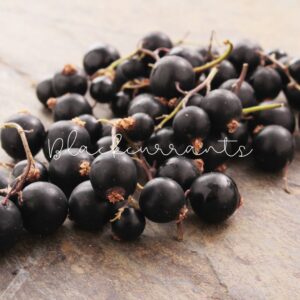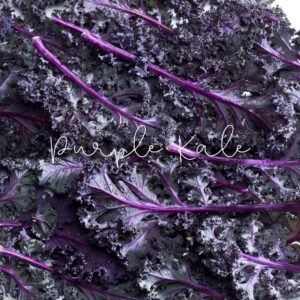Maintaining optimal eye health is critical, but it’s often overlooked until problems arise. Vision is one of our most valuable senses, yet eye health requires consistent care through regular check-ups, lifestyle adjustments, and—most importantly—proper nutrition.
Did you know that incorporating purple foods into your diet can provide essential nutrients and antioxidants that support and protect your vision? These vibrant foods are not only visually appealing but also packed with compounds that promote eye health and help prevent common vision-related issues.
Here’s a countdown of the top 8 purple foods that can enhance your eye health naturally.
8. Purple Grapes
Purple grapes are not just a tasty snack—they’re a powerhouse of nutrients, especially for eye health.
- Key Nutrients:
- Resveratrol: A powerful antioxidant that protects the retina from oxidative stress and harmful UV light exposure.
- Vitamin C: Supports the repair of tissues, including those in the eyes.
- Eye Health Benefits:
- Protects the retina from age-related damage.
- Reduces oxidative stress, which can lead to macular degeneration.
How to Enjoy:
Snack on them fresh, add them to salads, or freeze them for a refreshing treat.

Purple grapes, a fruit that’s as delightful to taste as it is beneficial for your health, especially when it comes to your eyes.
Now, you might be thinking, “Grapes are tasty, but how can they help my eyes?”
Here’s the thing: purple grapes are brimming with resveratrol, a standout antioxidant that’s gained fame for its heart health benefits.
Resveratrol protects the retina, which is essentially the high-def screen at the back of your eye that captures all the visuals of your world.
This powerful antioxidant helps shield the retina from some pretty nasty stuff, like harmful UV light that can sneak in even on cloudy days and oxidative stress, which is like rust for your body, caused by everything from pollution to fried foods.
A study published in the Journal of Agricultural and Food Chemistry outlines resveratrol’s potential to reduce oxidative stress and inflammation, highlighting its protective benefits not just for the heart but also for the eyes.
So what are you waiting for? Pop them as a snack or toss them in a salad.
However you choose to enjoy them, you’re not just satisfying your sweet tooth; you’re also giving your eyes a little extra love.
7. Eggplant
Eggplant is not just versatile in cooking but also packed with nutrients that support healthy vision.
- Key Nutrients:
- Nasunin: A potent antioxidant that protects cell membranes.
- Vitamin B1 and B6: Promote overall neurological and eye health.
- Eye Health Benefits:
- Shields the eyes from oxidative damage.
- Supports cellular repair and function.
How to Enjoy:
Roast, grill, or bake eggplant, or use it in recipes like ratatouille or baba ganoush.

Beyond its striking glossy purple skin lies a powerhouse of nutrients beneficial for your health, especially when it comes to maintaining healthy vision.
One of the standout components of eggplant is nasunin, an antioxidant that specifically targets and supports brain and eye health.
Nasunin excels in protecting the cell membranes from damage.
These membranes are like the body’s cellular bodyguards, keeping vital components in and harmful agents out, crucial for maintaining healthy function in all cells, including those in the eyes.
By fortifying these cell walls, nasunin helps safeguard your vision, providing an added defense against the wear and tear our eyes can undergo in our daily lives.
Eggplants are also a good source of fiber, which is great for digestive health, and they contain other essential nutrients like vitamin B1, vitamin B6, and potassium.
These nutrients collectively support overall health, contributing to everything from improved heart health to better brain function.
Eggplant can be roasted, grilled, or baked and is famously delicious in dishes like ratatouille, baba ganoush, or as a hearty addition to pasta sauces.
Its ability to absorb flavors makes it a fantastic ingredient for a wide array of culinary creations.
So, don’t overlook the eggplant in your next grocery run. It’s not only a versatile ingredient that can add depth to your dishes but also a nutritional powerhouse that can help keep your eyes — and your body — in good health.
6. Purple Sweet Potatoes
These vibrant tubers are a delicious way to boost your eye health.
- Key Nutrients:
- Anthocyanins: Reduce inflammation and support eye tissue repair.
- Vitamin A: Essential for night vision and overall eye health.
- Eye Health Benefits:
- Helps prevent cataracts and macular degeneration.
- Promotes clear vision and reduces oxidative stress in the eyes.
How to Enjoy:
Bake, mash, or incorporate them into soups and desserts.

Purple sweet potatoes, a vibrant and nutritious choice that goes beyond just brightening up your plate.
These colorful root vegetables are full of anthocyanins, powerful antioxidants that play a significant role in health and wellness, particularly in combating inflammation and supporting eye health.
Anthocyanins are what give purple sweet potatoes their distinctive color.
They also help reduce inflammation in the body, a key factor in preventing chronic diseases.
For the eyes, this anti-inflammatory action is crucial. It helps lower the risk of developing serious conditions like cataracts, which cloud the lens of the eye, and age-related macular degeneration, a leading cause of vision loss in older adults.
These tubers are also a good source of vitamins, such as vitamin A, which is essential for maintaining healthy vision, skin health, and immune function.
They’re also rich in fiber, which aids in digestion and helps maintain a healthy gut, contributing to overall health and well-being.
So, whether as a side dish, in soups, or even in desserts, purple sweet potatoes provide a delicious way to enjoy their health benefits.
5. Blackcurrants
Blackcurrants are tiny berries with immense health benefits, especially for your eyes.
- Key Nutrients:
- Vitamin C: Strengthens eye tissues and boosts immunity.
- Gamma-Linolenic Acid (GLA): Reduces inflammation.
- Anthocyanins: Improve night vision and reduce eye fatigue.
- Eye Health Benefits:
- Enhances vascular health and ensures proper blood flow to the eyes.
- Reduces symptoms of dry eyes and protects against oxidative damage.
How to Enjoy:
Consume them fresh, blend into smoothies, or enjoy as juice.

A small fruit with a big reputation as a superfood for eye health.
These berries might be tiny, but they’re bursting with nutrients essential for maintaining sharp vision and overall eye health.
One of the standout features of blackcurrants is their high vitamin C content.
Vitamin C is a powerhouse antioxidant known for its role in bolstering the immune system, but it’s also vital for healthy eyes, contributing to the repair and maintenance of all body tissues, including those in the eyes.
In addition to vitamin C, blackcurrants are a rich source of gamma-linolenic acid (GLA), a type of Omega-6 fatty acid that’s less commonly found in the diet but highly beneficial.
GLA plays a role in reducing inflammation, which can be particularly beneficial for the eyes, especially in preventing and managing conditions that affect eye health and vision.
Blackcurrants are also loaded with anthocyanins, which give these berries their deep purple color.
These antioxidants have been linked to numerous eye health benefits, including the potential to improve night vision, reduce eye fatigue, and even slow down the signs of aging in the eyes.
The ability of blackcurrants to support vascular health also means better blood flow to the eyes, ensuring they receive the nutrients and oxygen needed to function optimally.
Blackcurrants can be enjoyed fresh, as a juice, or added to yogurts, smoothies, and desserts.
Not only will they add a burst of flavor and color to your meals, but they’ll also provide a significant boost to your eye health.
4. Purple Carrots
Purple carrots are a nutrient-packed twist on the classic orange variety.
- Key Nutrients:
- Beta-Carotene: Supports night vision and prevents dry eyes.
- Anthocyanins: Combat oxidative stress and inflammation.
- Eye Health Benefits:
- Reduces the risk of cataracts and macular degeneration.
- Protects the retina and promotes sharp vision.
How to Enjoy:
Eat raw, roast as a side dish, or blend into juices.

While most of us are familiar with their orange siblings, purple carrots bring something extra to the table.
Not only do they contain beta-carotene, the nutrient well-known for supporting eye health, but they’re also rich in anthocyanins, giving these carrots their vibrant hue and providing an additional layer of protection for your eyes.
By fighting off oxidative stress, anthocyanins help protect the delicate structures of the eye, potentially reducing the risk of conditions like cataracts and macular degeneration, which can impair vision.
Meanwhile, beta-carotene, the precursor to vitamin A, is essential for maintaining good vision, especially in low light conditions.
It plays a crucial role in preventing dry eyes and night blindness.
When you combine beta-carotene with anthocyanins, you get a dynamic duo that not only decreases the risk of eye infections but also supports overall eye health and vision.
Adding purple carrots to your diet is a delicious way to tap into these benefits.
They can be enjoyed raw as a crunchy snack, roasted to bring out their natural sweetness, or blended into smoothies and juices for a nutrient-packed beverage.
3. Blueberries
Blueberries are renowned for their health benefits, particularly for maintaining strong vision.
- Key Nutrients:
- Vitamin C and E: Protect against oxidative damage.
- Anthocyanins: Enhance night vision and reduce eye strain.
- Eye Health Benefits:
- Prevents cataracts and macular degeneration.
- Improves circulation to the eyes and reduces inflammation.
How to Enjoy:
Snack on them fresh, mix into yogurt, or bake into muffins.

Blueberries, the small berries known for their significant health benefits, including their powerful support for eye health.
Blueberries are like the superheroes of the fruit world, packed with antioxidants and vitamins that are essential for maintaining and improving eye health.
One of the key benefits of blueberries for the eyes is their ability to improve vision, especially in low-light conditions.
This is particularly important as it enhances the ability to see more clearly during the evening or in dimly lit environments, a crucial aspect of eye function.
Moreover, the high levels of antioxidants in blueberries, including vitamin C, vitamin E, and anthocyanins, offer protection against oxidative stress.
This type of stress can lead to oxygen damage in the eye tissues, contributing to age-related vision problems and conditions like cataracts and macular degeneration.
By neutralizing harmful free radicals, blueberries help shield the eyes from this damage, supporting overall eye health and helping to preserve vision.
These berries also contain nutrients that contribute to vascular health, ensuring proper blood flow to the eyes.
This is essential for delivering oxygen and vital nutrients to the eye tissues, further protecting against eye diseases and supporting eye function.
They can be enjoyed fresh as a snack, mixed into yogurt or oatmeal, or used in baking.
2. Purple Kale
Purple kale combines the nutritional power of leafy greens with the added benefits of anthocyanins.
- Key Nutrients:
- Vitamin A and Zeaxanthin: Protect the retina and improve vision clarity.
- Vitamin K: Supports healthy blood vessels in the eyes.
- Eye Health Benefits:
- Reduces oxidative damage and inflammation.
- Shields the eyes from harmful blue light exposure.
How to Enjoy:
Use in salads, sauté as a side dish, or blend into green smoothies.

Purple kale, a vibrant leafy green that’s as nutritious as it is eye-catching.
Often hailed as a superfood, purple kale brings a wealth of benefits to the table, particularly when it comes to eye health.
This vegetable is a treasure trove of antioxidants, vitamin K, vitamin A, and zeaxanthin, making it a powerful ally for your eyes.
The antioxidants in purple kale help fight off oxidative stress, a condition that can lead to cellular damage in various parts of the body, including the eyes.
This protective action is crucial for maintaining healthy vision and preventing age-related eye diseases.
Meanwhile, vitamin K is essential for blood health, supporting the delicate blood vessels in the eyes and ensuring that your vision remains sharp.
Vitamin A plays a starring role in eye health, vital for preventing conditions like night blindness and dry eyes, and supporting the overall health of the retina.
Then there’s zeaxanthin, one of the key nutrients that concentrate in the eyes, particularly in the macula—a part of the retina responsible for central vision.
Zeaxanthin, alongside lutein (another nutrient often found in kale), acts as a natural sunblock for the eyes, protecting them from harmful light waves.
Including purple kale in your diet is not just good for your eyes; it’s also a delicious way to boost your overall nutrient intake.
Purple kale can be used in much the same way as its green counterpart—added to salads, sautéed as a side dish, blended into smoothies, or incorporated into soups and stews.
Its slightly peppery taste adds depth and flavor to dishes, making it a versatile ingredient in your kitchen.
1. Acai Berries
At the top of our list, acai berries are a superfood that delivers unmatched eye health benefits.
- Key Nutrients:
- Anthocyanins: Reduce inflammation and protect against oxidative stress.
- Vitamins A, C, and E: Essential for preventing vision deterioration.
- Eye Health Benefits:
- Improves blood flow to the eyes, ensuring they receive essential nutrients.
- Protects against age-related vision problems like macular degeneration.
How to Enjoy:
Blend into smoothie bowls or enjoy as a topping for yogurt and oatmeal.

Acai berries, a nutrient-dense superfood that’s as beneficial for your eyes as it is for your overall health.
These dark purple berries come packed with powerful plant compounds that offer a myriad of benefits for eye health.
Acai berries stand out for their ability to potentially improve blood circulation to the eyes, a crucial factor in maintaining eye health and function.
Proper circulation ensures that your eyes receive the oxygen and nutrients they need to function optimally.
The antioxidants found in acai berries, including anthocyanins and vitamins A, C, and E, play a pivotal role in protecting the eyes from the wear and tear of aging.
These antioxidants help combat oxidative stress, a process that contributes to the deterioration of eye health over time, including conditions like macular degeneration and cataracts.
By neutralizing harmful free radicals, acai berries help reduce the impact of aging on the eyes and support the overall health of your vision.
Moreover, the rich array of nutrients in acai berries provides essential protection against cell damage, further safeguarding the eyes against environmental stressors and helping to maintain their health and vitality.
The high levels of antioxidants in acai berries not only benefit the eyes but also contribute to overall bodily health, supporting everything from cardiovascular health to cognitive function.
They can be enjoyed in smoothie bowls, juices, or as a natural topping for yogurt and oatmeal.
Nourish Your Vision with Purple Foods
By adding these vibrant purple foods to your diet, you’re not just indulging in delicious flavors but also giving your eyes the nutrients they need to stay healthy. From fighting oxidative stress to reducing inflammation, these foods offer a comprehensive approach to maintaining clear and sharp vision.
Which purple food is your favorite for eye health? Let us know in the comments below!
Stay vibrant, stay healthy, and take care of your eyes!